ENG VOL.49
February 2019


ICT Trend ____ Video Art, Where Science Meets Art
Creative Content
Built on Convergence
between Science and
Art, Fractal Turtle Ship
Video Art, Where Science Meets Art
Daejeon is often referred to as a city of advanced science and technology, or the special city for the Fourth Industrial Revolution. The city truly serves as the outpost to advance the country’s science and technology. True to its nickname, every corner of the city is filled with science-related buildings and places to visit, and a good case in point is the Daejeon Museum of Art. What is special about the museum is that it has world-renowned works of art. On the second floor of the museum, an impressive artwork that fills the center of the space welcomes visitors; it is the Fractal Turtle Ship by Nam June Paik, the world-famous video artist.
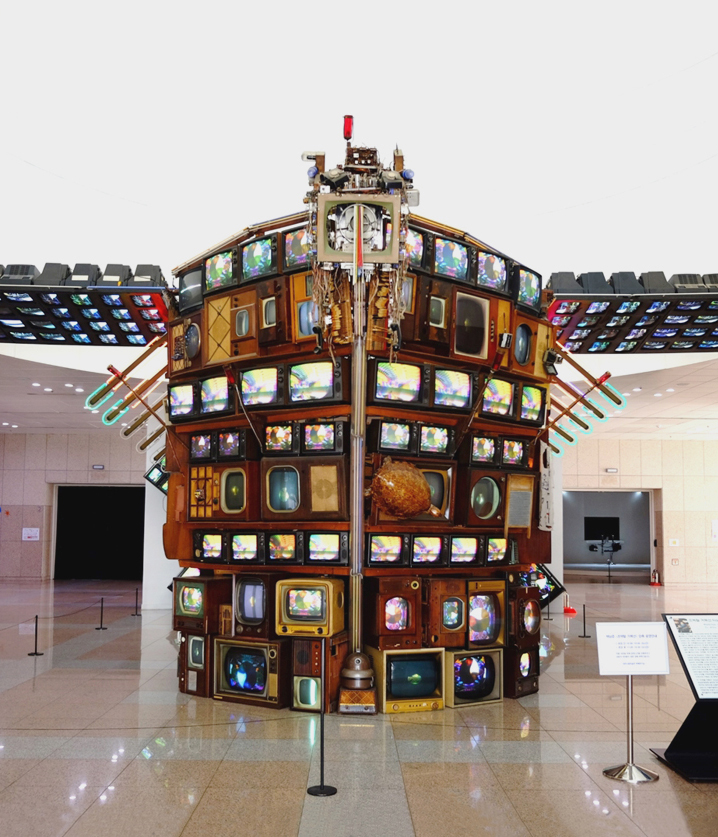
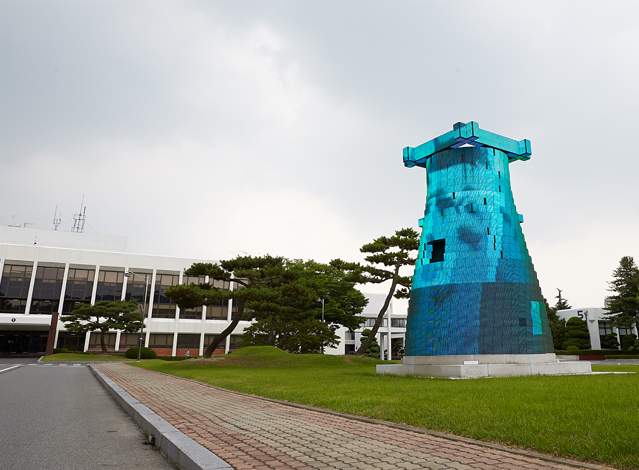
ETRI’s Digital Cheomseongdae (Observatory), proof of the superiority of Korea’s traditional culture and ICT
Fractal Turtle Ship Conveying Various Messages
The Fractal Turtle Ship is considered a symbol of the Daejeon Museum of Art. It is one of the masterpieces of Nam June Paik, which can be comparable to his other masterpiece The More the Better (1988), currently owned by the National Museum of Contemporary Art.
The Fractal Turtle Ship has something in common with ICT, and it also has a special relationship with ETRI; this masterpiece, together with ETRI’s Digital Cheomseongdae (Observatory), is vivid proof of the superiority of Korea’s traditional culture and ICT.
The word “fractal” in its name is originally a term from physics and mathematics. Its dictionary definition is a “geometric figure, each part of which has the same shape or character as the whole.” The concept was first introduced by Benoit Mandelbrot, a French mathematician, and is now widely applied to computer graphics.
This pattern is also commonly seen in nature, for example, in coastlines and clouds. Simply put, fractal patterns refer to structures in which substructures that resemble the whole structure are infinitely repeated.
Similarly, in the Fractal Turtle Ship, you may find each substructure repeating itself, making a pattern as a whole. These small components make up the shape of a huge and magnificent turtle ship. At first glance, it looks disordered, but it has unity and regularity if you look closer.
In designing this work, Paik’s focus was on the turtle. The turtle is a symbol of longevity, as this long-surviving animal was once the contemporary of dinosaurs. Here, the artist vividly contrasts humans destroying the Earth with this turtle, conveying various messages to us. Paik once said, “The turtle lived in the same era as the dinosaur, as it is now, and it has even survived the extinction of the dinosaur. The species is all about longevity. The history of the species is a stark contrast with that of humanity, which has been rapidly building civilization but destroying the Earth at the same speed. Thus, the turtle in this work represents a symbolic figure of recirculation, aimed at decelerating development and promoting the longevity of human culture.”
The Fractal Turtle Ship is a piece of video art made of TVs, videos, and lasers. It was built as a symbol of hope for the success of the Daejeon Expo '93, held in Daejeon in 1993, and exhibited during the event. After the Expo, as the operation of the exhibition halls was transferred to the Daejeon City Corporation, the piece was relocated to the Daejeon Museum of Art. Twenty five years have already passed since the Fractal Turtle Ship entered the city of Daejeon.
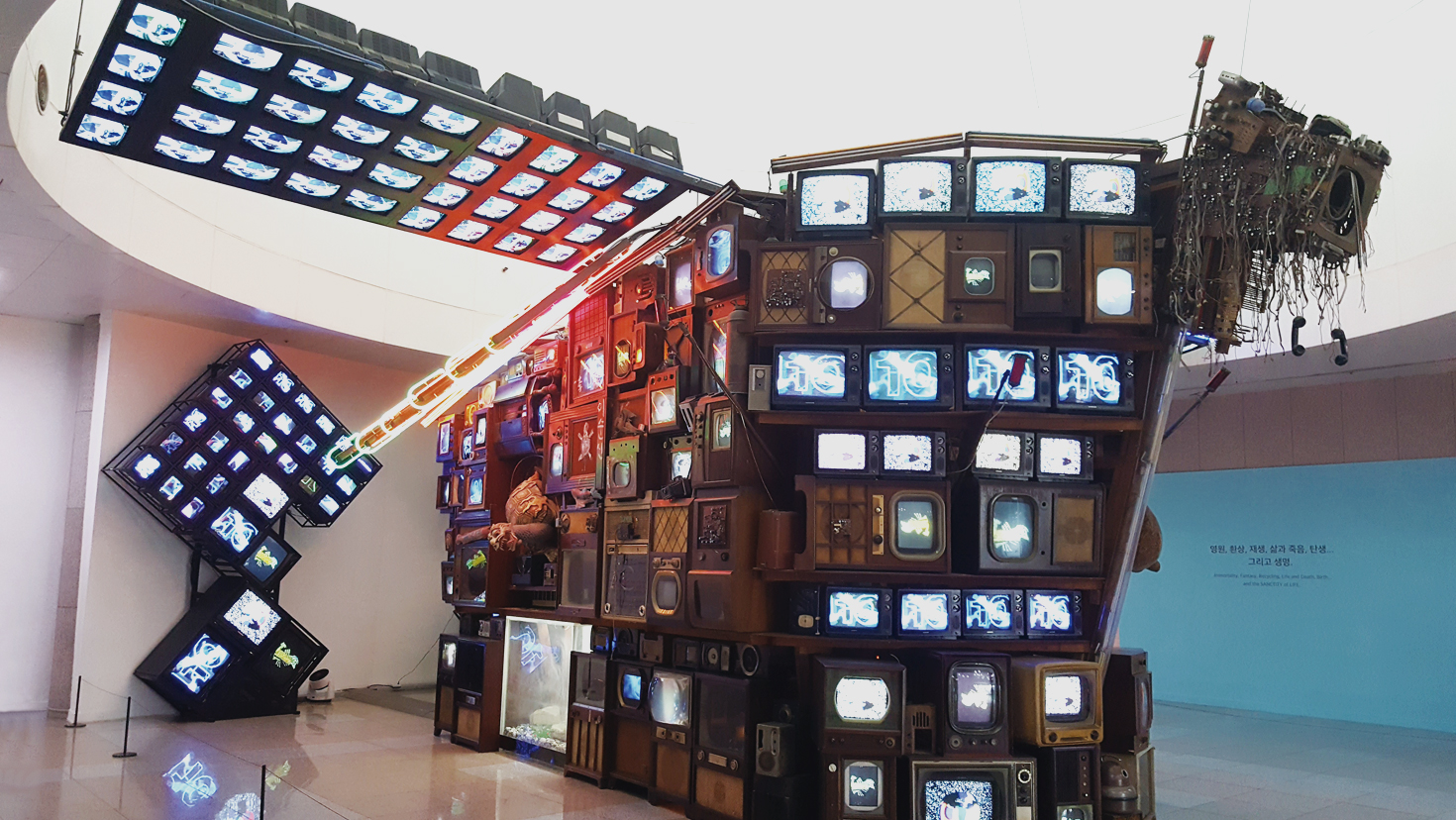
Fractal Turtle Ship by Nam June Paik, exhibited at the Daejeon Museum of Art
Nam June Paik, a Pioneer Bringing Science and Technology into the Realm of Art
In early January of 2010, the Fractal Turtle Ship was exhibited under a huge glass case near the Statue of Admiral Yi Sun Shin at the Gwanghwamun Gate on the occasion of “Seoul Festival of Lights,” hosted by the City of Seoul in 2009. If General Yi were here with us, he would be very pleased to see the turtle ship near him. It was said to take two weeks to bring the piece over to the place and reassemble it there. It took so long because each component and material of the piece had to be reestablished in accordance with its original design drawings. The disassembly alone cost more than KRW 10 million, and its insurance value was estimated at KRW one billion as of 2009.
At first glance, the Fractal Turtle Ship looks like a disordered stack of antique electronic devices, as commonly found at old electronic shops. If you look closely, piece by piece, however, it is truly an eye-opener. The masterpiece contains 348 electronic devices as its components, including TVs, phonographs, fire extinguishers, telephones, cameras, and radios. The number of display devices in the form of TV alone amounts to 250, and the total number of components is over 1,000. Not only that, the external part of the turtle ship is decorated with a grand piano without a cover, and the center of the main body is equipped with a damaged car body. Funny images on the car door are of two turtles, which appear to have been drawn by Paik. Looking through the car window gives you a glimpse into hologram-like images of the early days, making you feel as if you were peeping into the unknown world. A stuffed turtle is also placed there.
The displays show dynamic images, consistently changing at a rate of several frames per second while giving viewers no time to appreciate what those images represent. Fluorescent colored paddles made of neon tubes hang on the side of the ship in a dynamic manner. It looks as if the turtle ship would fly off into the sky at any moment while pulling its paddles up and down. It is a Mammoth-class ship with a width of 8 m, including the wings, length of 12 m, and height of 5 m. TVs installed on and near the turtle ship are old-style cathode-ray tube models of SD TVs with a protruding backs, unlike the advanced UHD or HD flat screen TVs of today. Surprisingly, some of them were made in 1928. When looking from the front side, the work truly looks like the turtle ship with the paddles and turtle head attached to the main body. Its backside is said to represent the shape of the Hansando Island, where the Battle of Hansando took place.
Nam June Paik is celebrated as a genius artist who elevated stacks of TVs and videos to the realm of art. Before him, no one had even thought of creating works of art using discarded electronic devices. This means that he is a genius with originality and creativity that are unique to scientists. Paik created a new realm of video art using old electronic appliances, video, and audio resources. Likewise, he was an artist who consistently sought to explore the two domains of science and art. The only pity is that it is difficult to photograph the work in its entirety because camera images cannot authentically represent this magnificent and huge turtle ship and the great spirit in it.
Meanwhile, the late Nam June Paik had a deep connection to the City of Daejeon. From the time of Daejeon Expo till early 2000, before he passed away, exhibitions dealing with scientific subjects, such as “Robots, from Nam June Paik to HUBO,” were planned and performed on multiple occasions in the National Science Museum in Daejeon, and in and around Seoul as well. Paik sought to appreciate the true nature of science and humanity and further translate this appreciation into art, thereby conveying significant messages to modern people. It might not be an exaggeration to say that Nam June Paik was a true pioneer who brought science and technology into the realm of art, and he is still with us, sending out a message of eternity through the Fractal Turtle Ship.
This article is quoted from Technology That Will Change the World, Future Brought by Digital Technology, ETRI’s Easy IT series (2018).
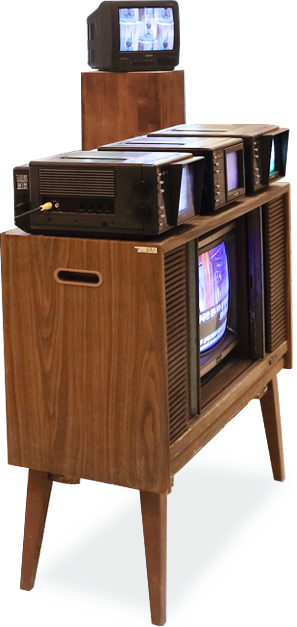
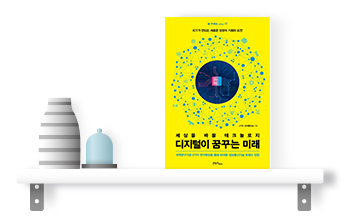
Future Brought by Digital Technology
Written by Kilho, Chong · ETRI's Superior Public Relations Section Published by Contentshada
Future Brought by Digital Technology issued by ETRI aims to help readers better understand what the Fourth Industrial Revolution means to them and to introduce various ICT trends so that readers can have a fascinating glimpse of what might happen in the near future. This book will be a reliable guide for anyone
who wants to learn and understand how to adapt to the rapidly changing, unpredictable world driven by technological innovations and flexibly respond to risks that might be faced going forward.



